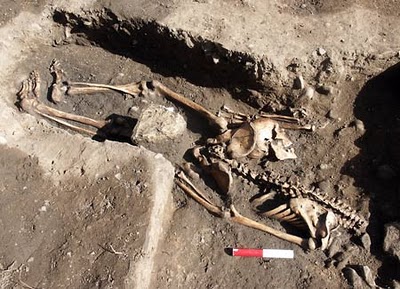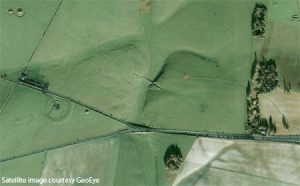 Archaeologists have stumbled upon what appears to be the remains of a substantial ancient settlement at Umm El-Mawagir in Kharga Oasis, Egypt.
Archaeologists have stumbled upon what appears to be the remains of a substantial ancient settlement at Umm El-Mawagir in Kharga Oasis, Egypt.
Dated to the Second Intermediate Period (1650 to 1550 BC), the newfound city is at least a thousand years older than any of the other major surviving ancient remains in the area.
The ancient town lies along the bustling caravan routes connecting the Nile Valley of Egypt and the El-Kharga oasis with points as far as Darfur in western Sudan.
The discovery was made by an American-Egyptian archaeological team from Yale University that is systematically searching the area as part of the Theban Desert Road Survey, a project aimed at investigating and mapping the ancient caravan routes in Egypt’s Western Desert.
In a press statement, Dr. Zahi Hawass, Secretary General of the Supreme Council of Antiquities (SCA), said that the newly discovered settlement is 1km long from north to south and 250m wide from east to west. The Secretary General (and Chasing Mummies star) added that archaeological evidence at the site indicates that the settlement inhabitants were part of an administrative centre and engaged in baking on a massive scale.
Administrative Centre &Bakery
Large mudbrick structures remains of rooms and halls similar to to administrative buildings previously found in several sites in the Nile Valley were found during the excavations, said Dr John Coleman Darnell, head of the Yale mission. Some of the constructions may have been used as a lookout post.
The archaeologists also unearthed part of an ancient bakery with two ovens and a potters wheel, used to make the ceramic bread forms in which the dough was baked.
The amount of remains found in the debris dumps outside the bakery suggest that the settlement produced a food surplus and may have even been feeding an army.
Dr. Deborah Darnell, co-director of the mission, said that early studies on the site revealed that the settlement began during the Middle Kingdom (2134-1569 BC) and lasted to the beginning of the New Kingdom (1569-1081 BC). However the site was at its peak from the late Middle Kingdom (1786-1665 BC) to the Second Intermediate Period (1600-1569 BC).
The Forty Days Road
The Kharga Oasis is the southernmost of Egypt’s five western oases. It is located about 200km west of the Nile Valley, and with its 150km length it is the largest oasis in Egypt’s Libyan desert. It used to be the before last stop on the Darb el-Arbain caravan route. Also known as the Forty Days Road, the long land route was important for the trade of gold, ivory, spices and wheat between Egypt and Nubia.
Nearby the Temple of Hibis, built by kings Darius I and II in the 6th century BC can be found. It isdedicated to the Theban triad – Amon Mut and Khonsu – and one of the best preserved Persian period temples in Egypt.




